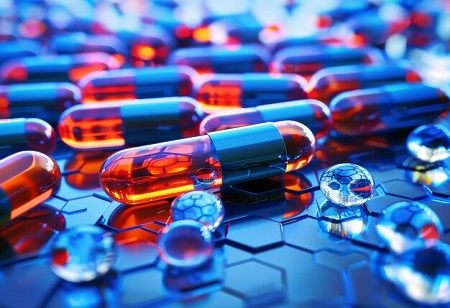Janifha Evangeline, Assistant Editor, India Pharma Outlook

Kindeva Drug Delivery’s Woodbury, Minnesota facility that was launched earlier in 2024 was inspected & has been classified by the FDA successfully. The new business unit of Kindeva supports stand alone as well as integrated analytical services for the biopharmaceutical, pharma as well as medical devices sector.
“We are delighted to have VAI status for the first time in our analytical services laboratory at our Woodbury site,” said Kindeva Vice President of Analytical Services Jennifer Riter.
“As a result of our FDA registration and our requested approval of Kindeva Drug Delivery L.P. located in Woodbury as an alternate finished product test site, this was a great opportunity for Kindeva to host the FDA for an inspection. The successful outcome demonstrates Kindeva’s laboratory as an established site to continue supporting our customers with analytical services as they bring their products to market,” she added.
The global drug delivery systems market is anticipated to reach USD 63.38 Billion in 2032, growing at a CAGR of 4.0 per cent until the forecast period. Drug delivery has evolved significantly and this has enabled more effective & targeted treatment options. Drug delivery has witnessed significant innovations which are aimed at improving efficacy, convenience as well as safety of therapeutic agents. The innovations right from conventional methods such as oral as well as intravenous administration to cutting-edge nanotechnology-based systems have transformed patient care. In this article let us look at the top innovations in drug delivery systems which have shaped modern medicine.
Oral administration stays as one of the most common as well as convenient route for drug delivery and the innovations in this landscape has focused more on enhancing bioavailability, patient compliance as well as drug absorption.
Sustained release formulations were designed with an aim for releasing a drug at a predetermined rate and this helps in extending the therapeutic effect and these formulations aid in maintaining consistent plasma drug levels. This helps in decreasing of dosing as well as enhancing patient adherence. Matrix systems, osmotic pumps as well as coated pellets are some of the techniques which are commonly used. Gastroretentive drug delivery systems are designed for prolonging the residence time of drugs in the stomach and this is specifically useful for drugs which can be absorbed primarily either in the stomach or upper small intestine part of the human body. Expandable systems, bioadhesive formulas as well as floating tablets are some of the approaches that help in retaining the drug in the gastric region for an extended time.
“Recognizing the advances in our understanding of how drugs are metabolized, and applying engineering tools to facilitate personalized dosing, we believe, can help transform the safety and efficacy of many drugs,” says Giovanni Traverso, an associate professor of mechanical engineering at MIT, a gastroenterologist at Brigham and Women’s Hospital, and the senior author of the study.
TDDS provide a non-invasive alternative to injectable as well as oral routes. By bypassing the gastrointestinal tract, TDDS deliver drugs via the skin directly into the systemic circulation. The transdermal patches deliver a particular type of dose of medication via the skin and these are adhesive patches which offer controlled release of drugs over a prolonged period. For instance, nicotine patches which are used for smoking cessation as well as hormone patches for hormone replacement therapy. Microneedles penetrate the outer layer of the skin even without reaching the nerve endings and this makes the process painless. These needles help in creating microchannels via which drugs can be delivered into the skin directly. Microneedles are now being explored for insulin, vaccines as well as various other therapeutic agents.
One of the leading patent filers in transdermal drug delivery is Sorrento Therapeutics. This biopharmaceutical company is renowned for its R&D capabilities in several areas of medicine which includes cancer treatments, immunotherapies, & anti-body based therapies.
Nanotechnology has enabled the development of nanoscale carriers which can help in enhancing drug stability, targeting as well as solubility. It includes liposomes, nanoparticles, and dendrimers. Liposomes are the spherical vesicles with a phospholipid bilayer and these are capable of encapsulating both hydrophobic drugs as well as hydrophilic. It helps in enhancing drug stability, enhance therapeutic efficacy as well as reduce toxicity. Some of the liposomal formulations of drugs such as doxorubicin are implemented in the treatment of cancer disease. Nanoparticles provide unique advantages for drug delivery and these include polymeric nanoparticles, metallic nanoparticles as well as solid lipid nanoparticles providing unique merits for drug delivery. These can be designed or engineered for delivering drugs to particular tissues or cells, improving the therapeutic index at the same time reducing the side effects. These are being explored for gene delivery, infectious diseases as well as cancer therapy.
Eminent clinical pharmacologist, Nilima A Kshirsagar on 9th of July 18, 2024 shared her insights on the liposome meditated drug delivery system and this has attracted global attention. Under the auspices of Scientific and Academic Forum of Mahatma Gandhi Medical College and Research Institute, Dr Kshirsagar spoke about the drug delivery system based on liposomes.
These innovations not just enhance the therapeutic outcomes but they also improve the quality of life for patients by rendering more convenient as well as less invasive treatment options. The future of drug delivery looks bright as well as promising with the present research that is aimed at developing more tailored as well as advanced solutions for meeting the requirements of modern medicine.